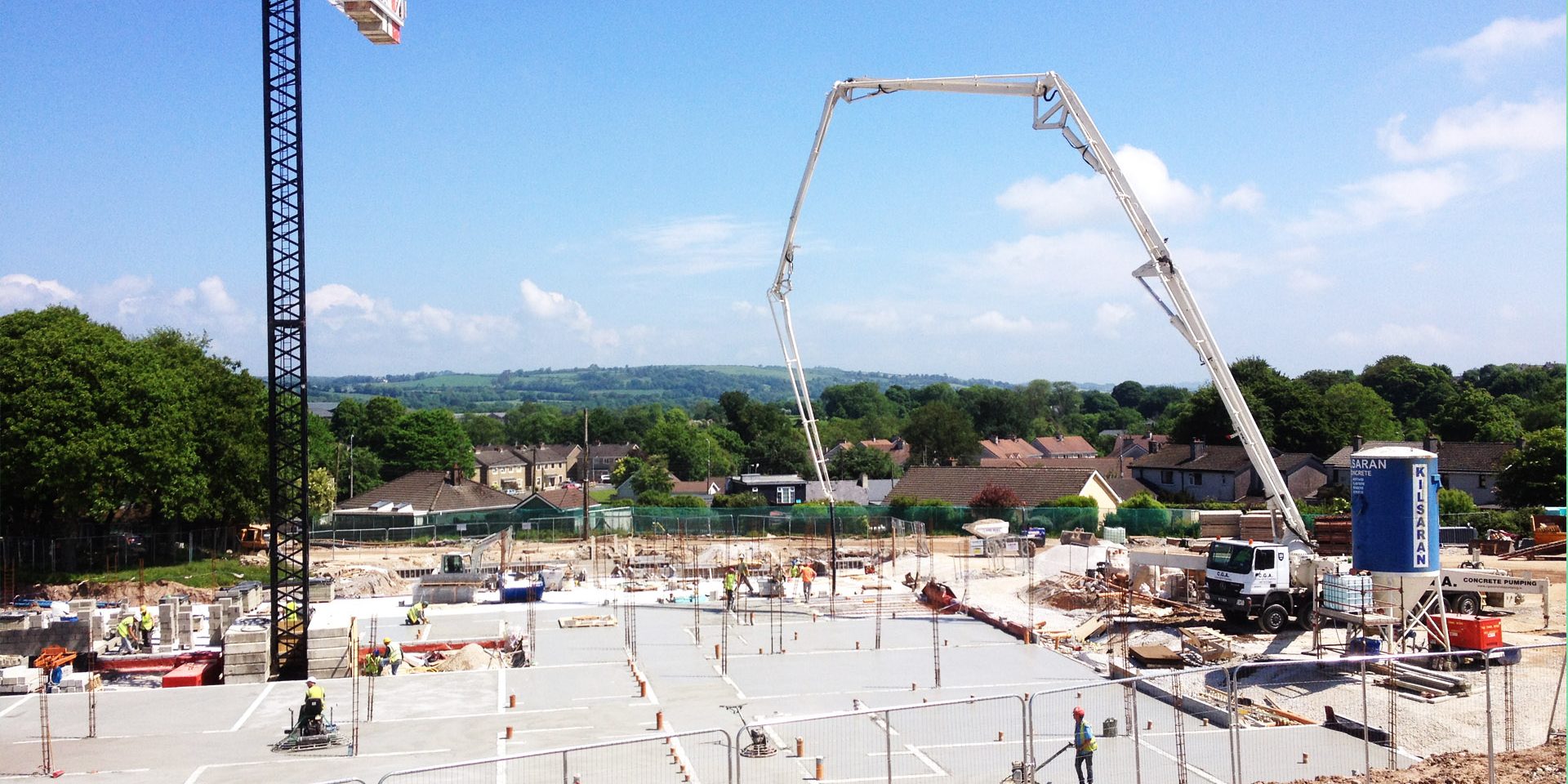Using a Concrete Pump Set Up Clean Up.
Our Guide to Set Up & Clean Up of a Concrete Pump:
Using a concrete pump set up clean up requires not only knowing how to operate it, but also how to protect your equipment and job site when setting up and cleaning up.
These tips work for us to save us time, protect our equipment, and prevent causing damage to the job site.
using a concrete pump set up clean up
Identify the Best Location to Set Up
First thing you want to do when getting to a job is to meet with the contractor. Find out the location and specs of the pour. Visualize where to set up and what you need to get the job done. Walk the job to make sure you can avoid hazards that will damage your concrete pump, like running over a piece of rebar or driving into a hole. Locate an area to set up out of the other trades’ areas and walkways, such as electricians, masons, pipe layers, etc.
Prepare for using a Concrete Pump
Check these conditions on your machine:
- Check your machine’s fluid levels such as oil and hydraulic fluid.
- Go over your concrete pump’s engine, check the water box, and make sure the machine is greased.
- Look inside the rock valve or “S” tube to check for obstructions.
- Hook up your 5″-4″ reducing elbow and your 4″-3″ reducer.
- Fully stretch the hoses you will need and hook them up to the clamps.
- Prime the pump with slurry. Use a 5-gallon bucket of water to mix a slurry of Portland or masonry cement. Just before you begin to pump the concrete for the job, throw the slurry in the hopper and stroke the pump 4 to 5 times. The slurry coats the walls of the hose ahead of your concrete as you push it through. This prevents the rubber hose from sucking all the grout off the concrete you are pumping, which will will not only turn the concrete to sand, but will also plug the hose. Some people prefer to use oil, mining oil, or slik pak for priming the pump’s system. Find which material works better for you.
Cleaning a Concrete Pump
Preparing to finish pumping and clean up:
- Visualize when you are about to finish the job. If you have a full hopper and 200 feet of hose, you know you have about a quarter of a yard or 5 wheelbarrows. So when the job is about 5 wheelbarrows from completion, stop pumping.
- Go over the mixer truck driver to let him know he can stop pouring concrete into the machine, and can start washing down his equipment.
- Pump the hopper down as low as it will go.
- Fill the hopper with water and start pumping again so that you can use the water to push the concrete left in the hose. Otherwise you will be pumping just air and the hose will not come clean.
- Go to the guys holding the hose and instruct them that as soon as they see water, to stop.
- Once the hoses are free of concrete, disconnect JUST THE HOPPER from the hoses.
- Wash the hopper and stick the concrete pump cleaning sponge ball in the reducer. Fill the hopper full of water to push the cleaning sponge down the system, cleaning all the hoses. Make sure to use a sponge ball one size bigger than the hose. For example use a 4″ ball for a 3″ hose.
- When the ball comes out the other end, clean the ends of the last hose used and disconnect the system.
- Post-concrete-pump-cleaning maintenance: Grease the machine after every job, dump the water box and look for dirty water especially any oil in the water, as well as loose pistons and loose connecting rods. This protects your investment and makes using a concrete pump require fewer repairs and less downtime.
- using a concrete pump set up clean up manual, like the one here







